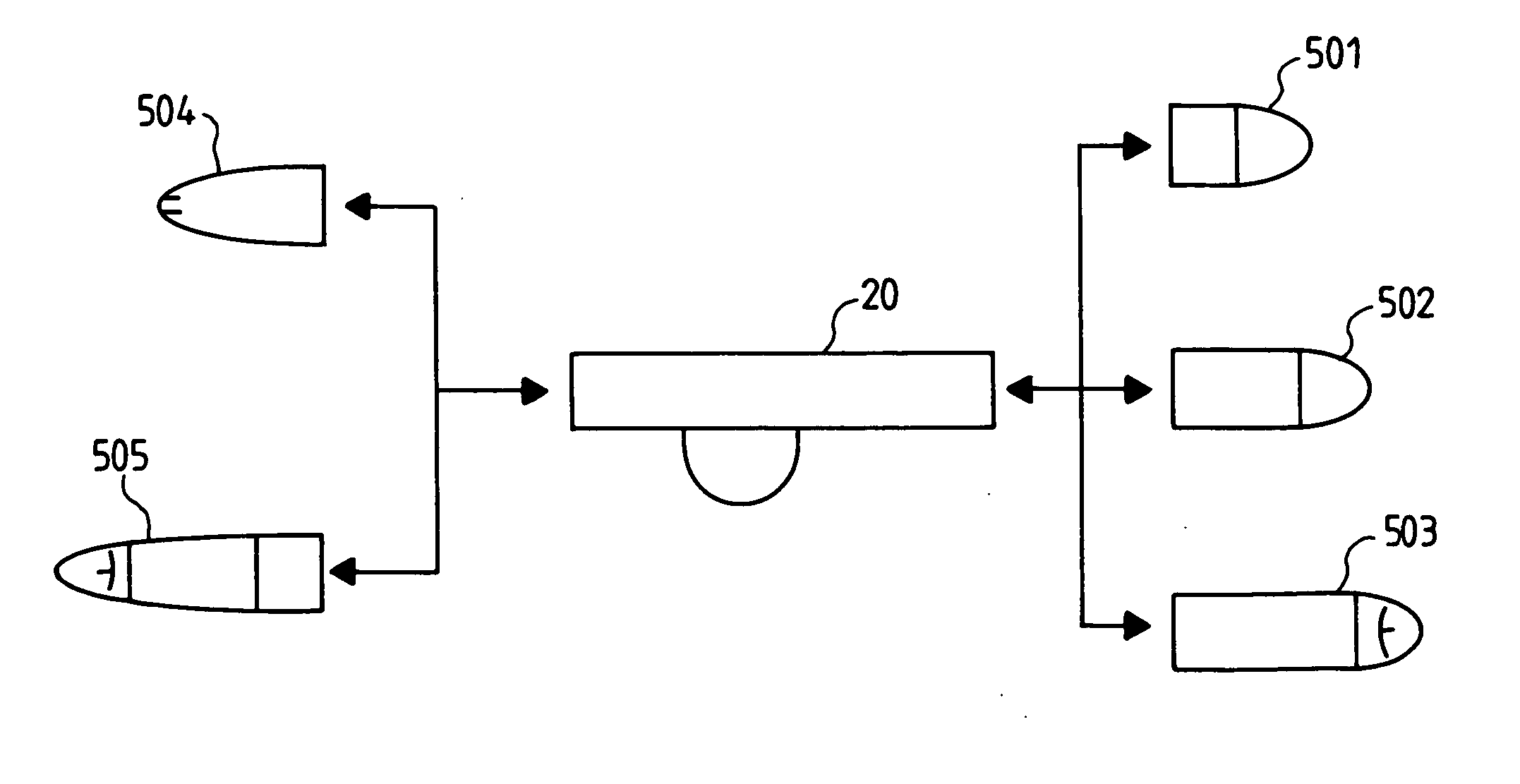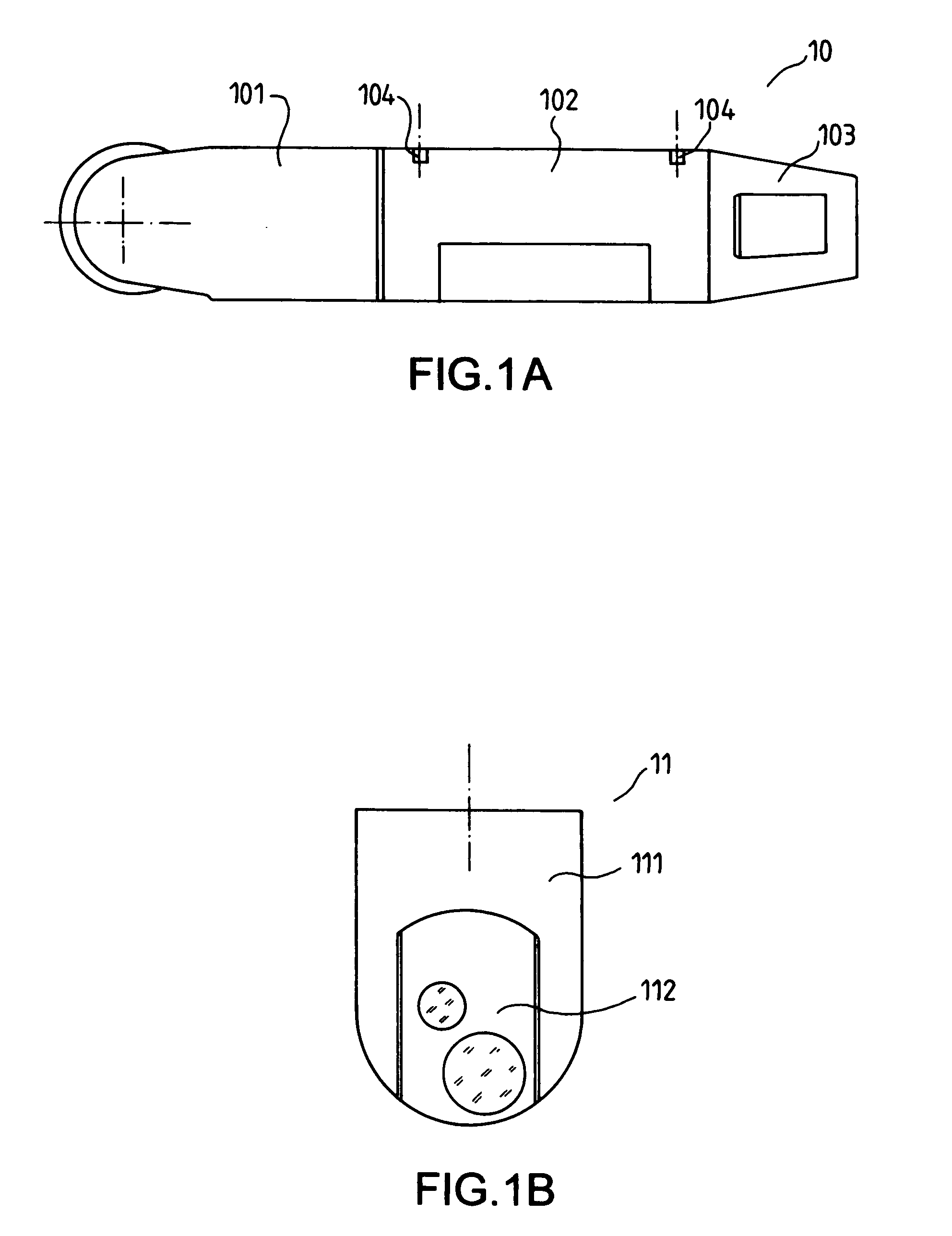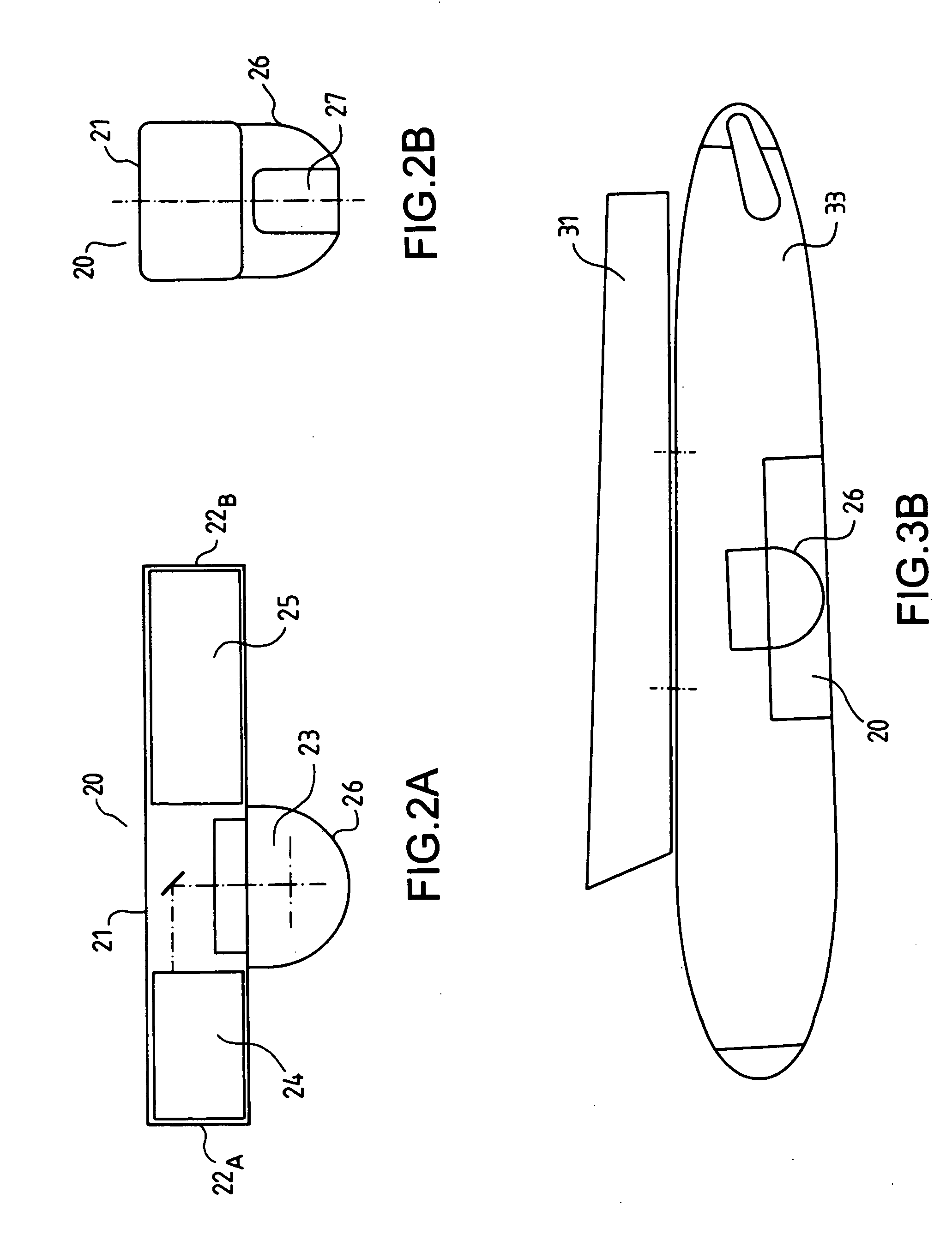Onboard modular optronic system
- Summary
- Abstract
- Description
- Claims
- Application Information
AI Technical Summary
Benefits of technology
Problems solved by technology
Method used
Image
Examples
Embodiment Construction
[0017] The onboard optronics system according to the invention comprises at least one optronics sensor, for example a camera, defining a target line which needs to be able to be addressed in a given space. It can also comprise a laser, for example for designating a target. It is equipped with a mechanism for stabilizing and orienting the target line or lines defined by the or each sensor, and by the laser where appropriate. According to the invention, the system is modular, comprising in particular a mechanical structure designed to be the interface with the carrier, said mechanical structure comprising a central module forming a section with three interfaces, namely said interface with the carrier and two lateral interfaces that can receive other modules. According to the invention, the target line orientation and stabilization mechanism is directly incorporated in the central module forming a section. The advantages of such a structure are manifold. Since the opto-mechanical compo...
PUM
 Login to View More
Login to View More Abstract
Description
Claims
Application Information
 Login to View More
Login to View More - R&D
- Intellectual Property
- Life Sciences
- Materials
- Tech Scout
- Unparalleled Data Quality
- Higher Quality Content
- 60% Fewer Hallucinations
Browse by: Latest US Patents, China's latest patents, Technical Efficacy Thesaurus, Application Domain, Technology Topic, Popular Technical Reports.
© 2025 PatSnap. All rights reserved.Legal|Privacy policy|Modern Slavery Act Transparency Statement|Sitemap|About US| Contact US: help@patsnap.com



